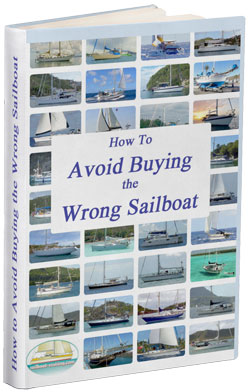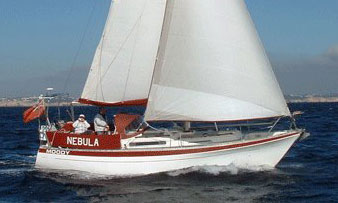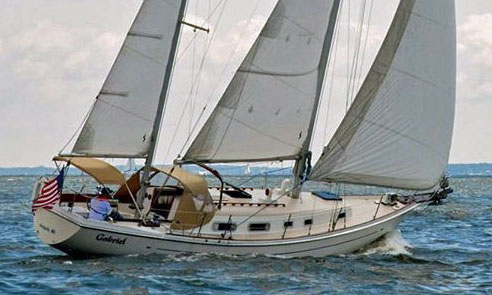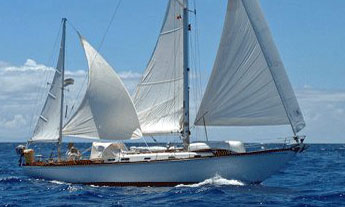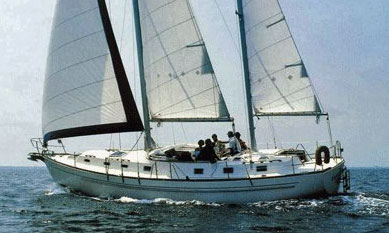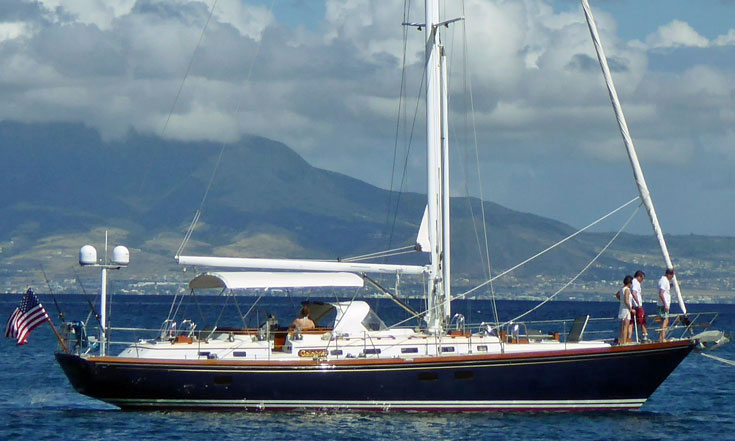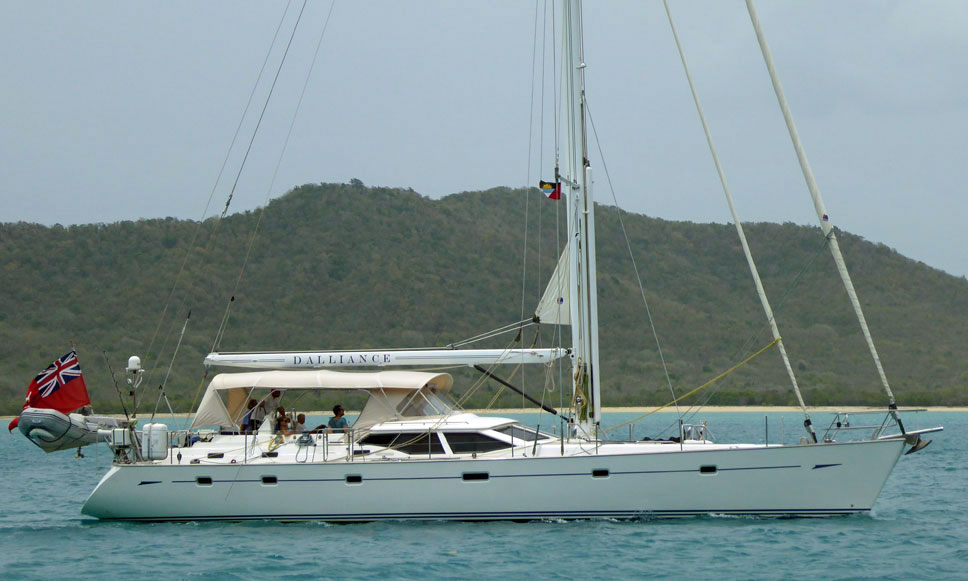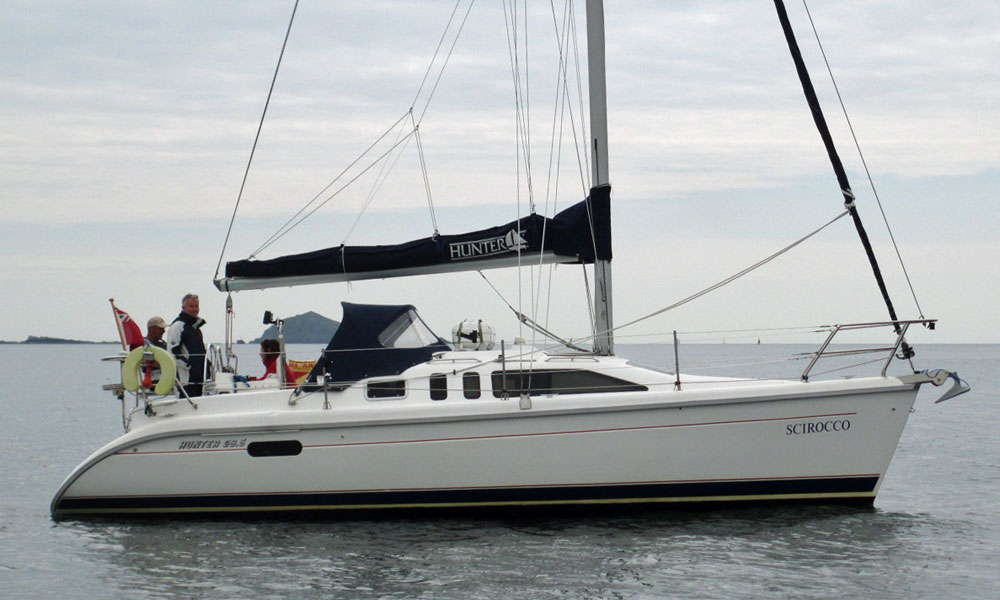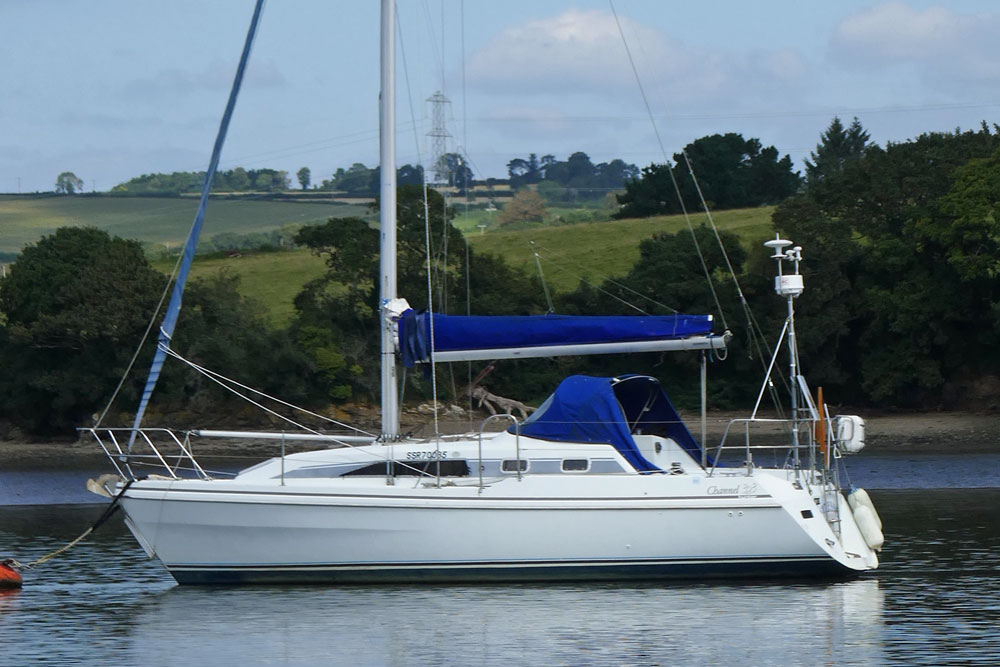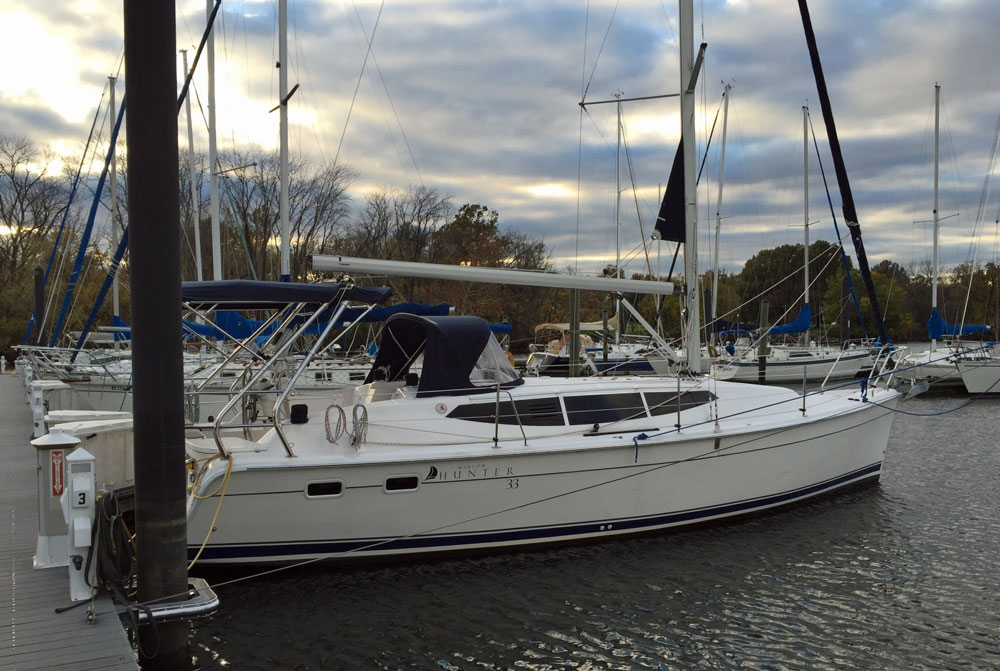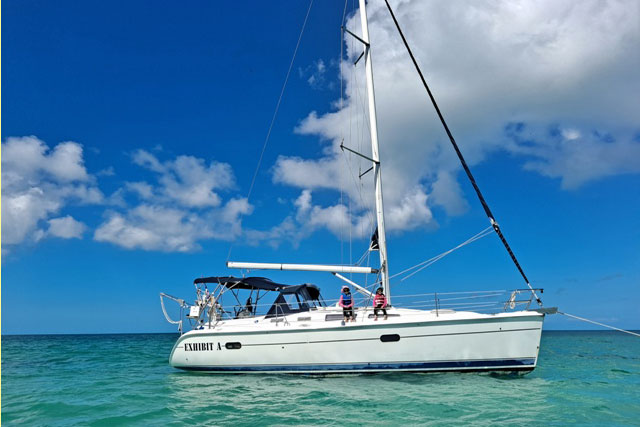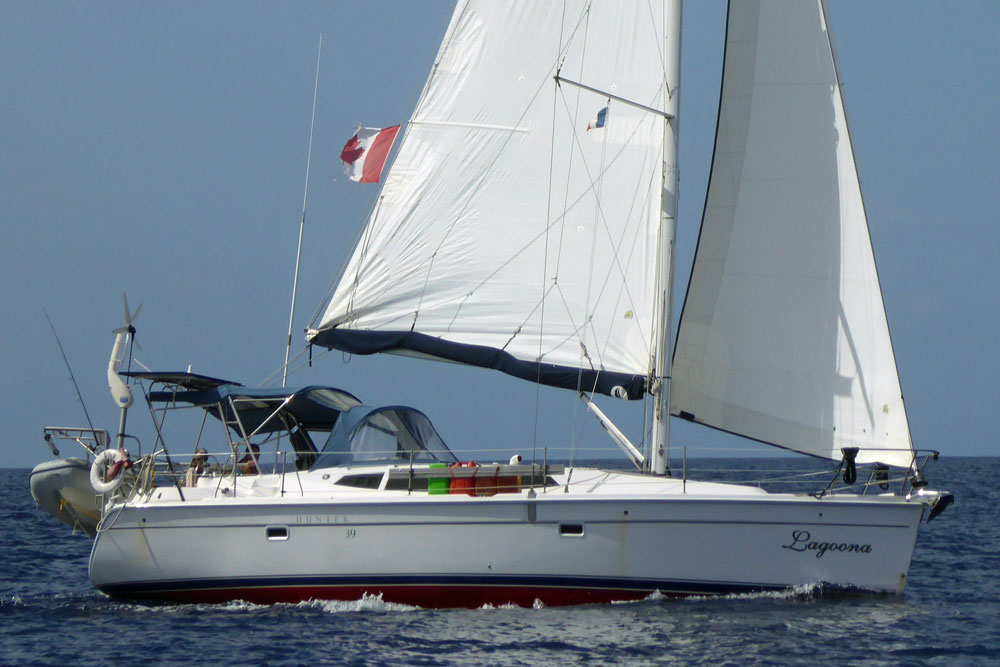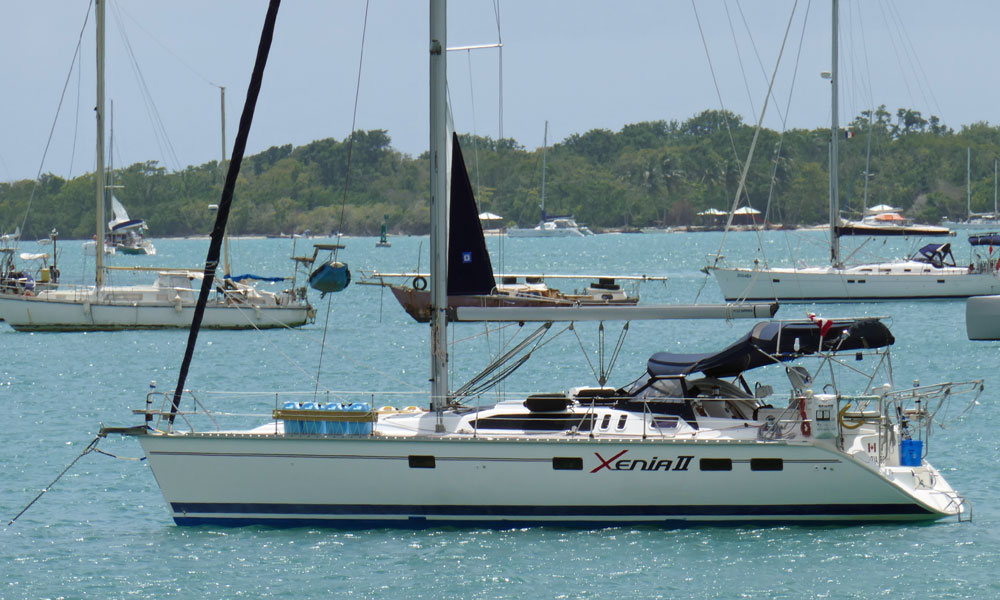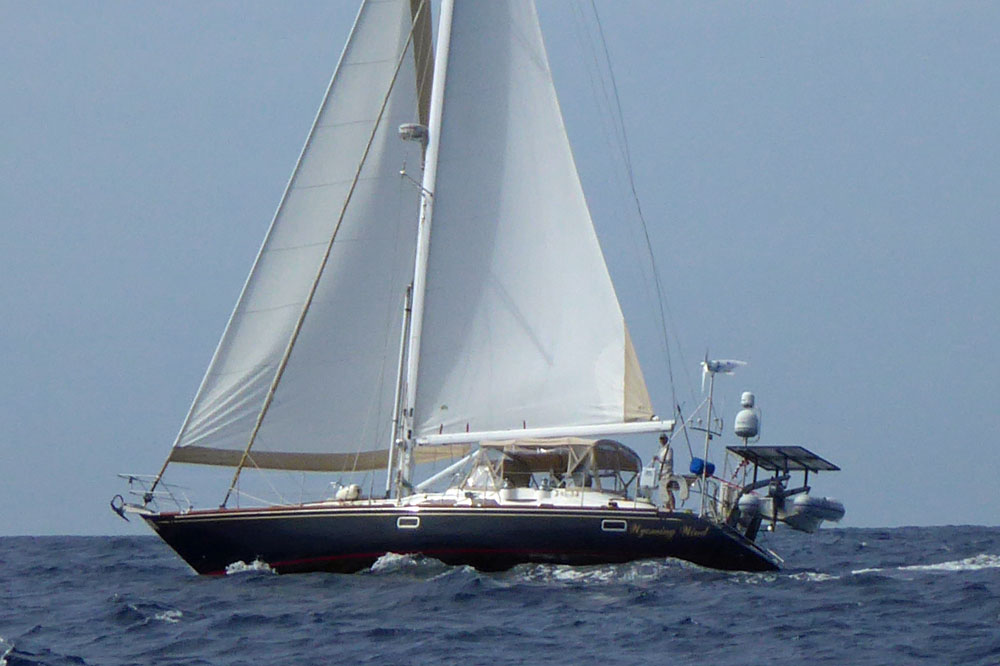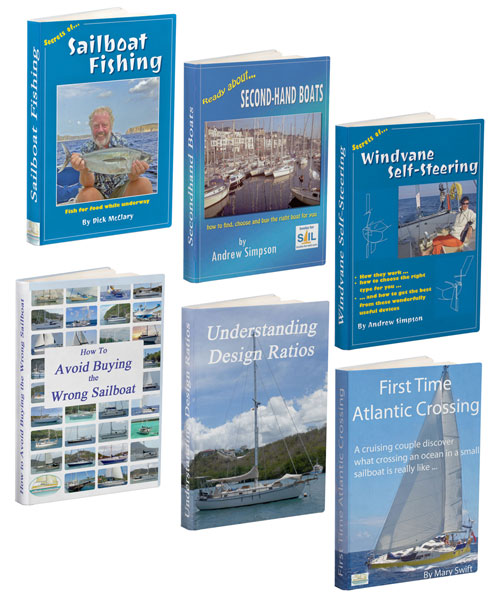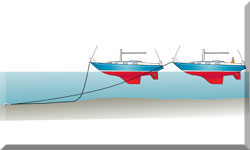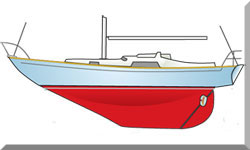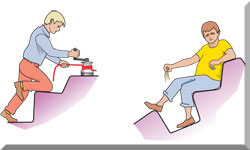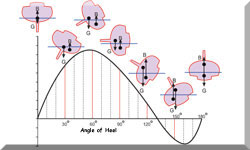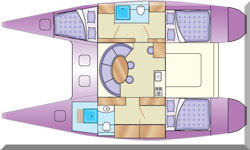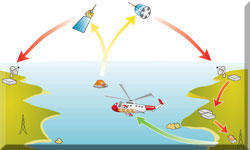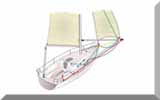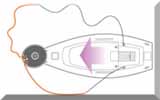- Home
- Cruising Yachts 40' to 45'
- Hunter 42
The Hunter 42 Passage Sailboat
Specs & Key Performance Indicators
The Hunter 42 Passage, a centre-cockpit 'B&R' rigged sloop, was designed and built in the USA by Hunter Marine throughout the years 1989 to 1997.
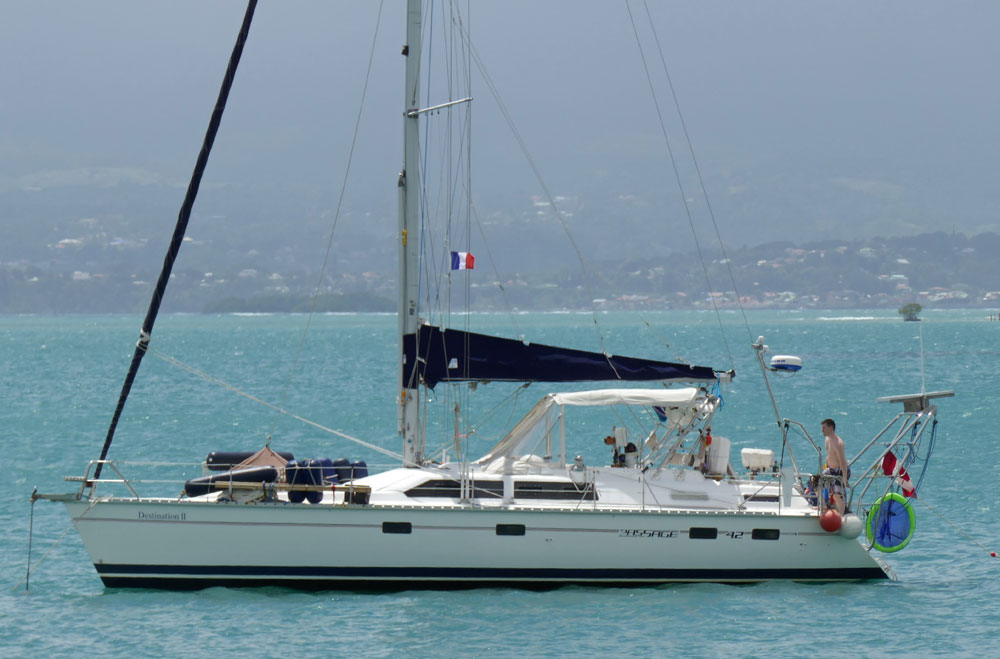 A Hunter 42 Passage
A Hunter 42 PassagePublished Specification for the Hunter 42 Passage
- Keel & Rudder Configuration: Wing keel & spade rudder
- Hull Material: Fiberglass
- Length Overall: 42'6" (13.0 meters)*
- Waterline Length: 38'7" (11.6 meters)*
- Beam: 14'7" (4.3 meters)*
- Draft: 4'11" (1.5 meters)*
- Rig Type: B&R masthead sloop
- Displacement: 24,000 pounds (10,886 kilograms)*
- Ballast: 7,700 pounds (3,493 kilograms)*
- Sail Area: 949f2 (88.2m2)*
- Water Tank Capacity: 150 U.S. gallons (570 liters; 120 imperial gallons)
- Fuel Tank Capacity: 70 U.S. gallons (260 liters; 58 imperial gallons)
- Hull Speed: 8.08 knots
- Designer: Hunter Design Team
- Builder: Hunter Marine (USA)
- Year First Built: 1989
- Year Last Built: 1997
* Used to derive the design ratios referred to later in this article - here's how they're calculated...
Rig Dimensions
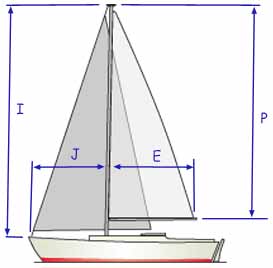 Sail Areas & Rig Dimensions
Sail Areas & Rig Dimensions- I (Foretriangle Height): 55.5 feet (16.92 meters)
- J (Foretriangle Base): 16.0 feet (4.88 meters)
- P (Mainsail Luff): 48.0 feet (14.63 meters)
- E (Mainsail Foot): 15.5 feet (4.72 meters)
Published Design Ratios
The Key Performance Indicators (KPIs)
Sail Area/Displacement Ratio (SA/D): 18.6
This ratio indicates a moderate balance between power and weight. The Hunter 42 Passage has enough sail area to perform well under a variety of wind conditions. While not an extreme racer, it provides a comfortable and enjoyable sailing experience for cruising.
Ballast/Displacement Ratio (B/D): 33%
With 33% of its weight as ballast, the Hunter 42 Passage is designed to be relatively stable. This makes it less prone to heeling excessively, which is crucial for comfort and safety, particularly on long passages.
Displacement/Length Ratio (D/L): 174
A D/L ratio of 174 places the Hunter 42 Passage in the moderate range, suggesting a good balance between speed and comfort. The boat can handle choppy seas reasonably well and offers a smooth ride.
Comfort Ratio: 26.25
The comfort ratio reflects the boat's overall design for living aboard and handling rough conditions. A ratio above 20 indicates that the Hunter 42 Passage is built with comfort in mind, suitable for extended cruising and providing a stable platform in rough weather.
Capsize Screening Formula: 2.01
With a capsize screening value of 2.01, the Hunter 42 Passage falls under the threshold of 2.0 often considered safe for offshore sailing. Although slightly above this line, it suggests the boat is fairly stable and less likely to capsize in heavy seas.
In summary, the Hunter 42 Passage is designed to offer a solid balance between performance and comfort, making it a suitable choice for cruisers who value both stability and ease of handling. It's not an extreme racer, but it can provide a pleasant and capable sailing experience, even on longer voyages.
But the Design Ratios are Not the Whole Story...
Although the design ratios can be interpreted to provide an indication of such a vessel's likely sailing characteristics they do however, have their limitations:
- The design ratios are static measurements which don't account for dynamic factors like wave action, wind gusts, or crew actions.
- They simplify complex interactions into single numbers, which can be misleading. Real-world performance is influenced by a multitude of factors that these ratios can't fully capture.
- The context in which the boat is intended to be used (e.g., coastal cruising vs. offshore racing) can greatly affect how these ratios should be interpreted.
Consequently, while these ratios provide valuable insights into the theoretical performance characteristics of a sailboat, they should be used as part of a broader assessment that includes practical experience, sea trials, and expert advice.
More Specs & Key Performance Indicators for Popular Cruising Boats
This article was written with the assistance of Gemini, a large language model developed by Google. Gemini was used to gather information, summarize research findings, and provide suggestions for the content and structure of the article.
Other sailboats in the Hunter range include:
Recent Articles
-
Hans Christian 43: Classic Bluewater Cruiser & Liveaboard Sailboat
Dec 10, 25 04:37 AM
Explore the Hans Christian 43: a legendary heavy-displacement, long-keel sailboat. Read our in-depth review of its specs, design ratios, and suitability for offshore cruising and living aboard. -
Planning Your Sailboat Liveaboard Lifestyle: An Ocean Sailor's Guide
Dec 06, 25 05:18 AM
Seasoned sailors share their methodical risk analysis for planning a secure Sailboat Liveaboard Lifestyle, covering financial, property, and relationship risks. -
Marine Cabin Heaters: The Expert’s Guide to Comfort & Safety at Sea
Dec 05, 25 06:52 AM
Choose the best Marine Cabin Heaters for your vessel. Expert advice on diesel, paraffin, and hot water systems for year-round cruising comfort.
